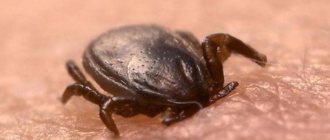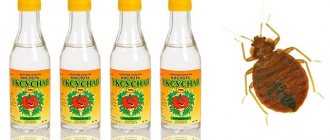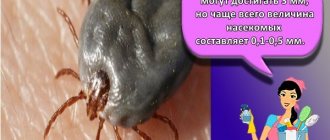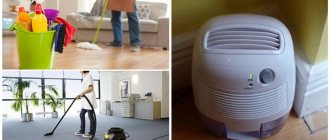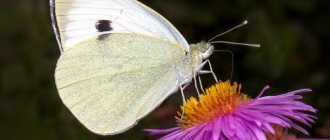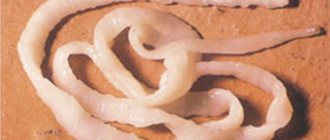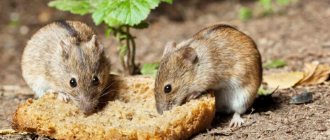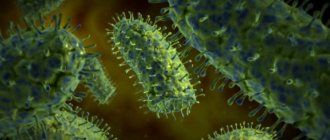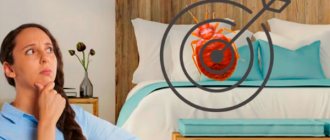2 167
no comments yet
6
Author:
Rasskazov Pavel.
Reading time: 4 minutes
Disinfection of a chicken coop is a set of measures carried out to destroy pathogens in chickens. In addition, antimicrobial treatment is carried out for preventive purposes, as well as to improve the quality of poultry meat and eggs once a quarter.
What do chicken parasites look like?
Chicken lice
Chicken lice are parasitic external insects that feed on the blood of mammals. They have microscopic dimensions - within 0.4-0.5 mm. The body is reddish-brown, flattened. After saturation, the filling of the stomach is visible.
Paws with small claws help them fixate on the victim. The head is quite large and mustachioed. The mouth contains chewing jaws (mandibles), with a sharp process for sucking blood. Externally, the chicken louse is similar to the human louse, which is where the name comes from.
Parasites emerge from egg-shaped capsules that develop over the course of a week. The louse nit is a translucent cocoon, whitish in color. Having hatched, the young begin to develop rapidly, moving into the adult stage. This leads to active distribution.
The lifespan of lice is 1 month, which they spend only on birds. There are varieties of lice that feed on both feathers and blood. Then bald spots appear on the bird.
Appearance
Chicken fleas can be distinguished from other insects due to their small size (up to 2 mm), jumping ability and high mobility. In addition, animals have:
- developed visual organs;
- elongated mustache;
- pronounced hunchback;
- lateral flattening of the chitin shell.
The average lifespan of these ectoparasites is 1.5 years, during which time they are capable of producing at least two thousand fertilized testicles. When an adult female lays eggs every day, they are scattered using her hind legs. When exposed to warm conditions, larvae emerge and feed on dander and chicken droppings. After pupation of the larvae, adult insects are formed that feed on the blood of poultry.
Signs of parasitism
When entering the barn, you can feel the appearance of small brown insects on the skin - chicken fleas, which is a sign of their progression in the room. Poultry become infected with the described parasites through:
- wild relatives;
- migration of fleas from nearby chicken coops;
- contaminated straw;
- other birds that ended up in the barn.
In the first stages of the appearance of parasitic insects in the chicken coop, it is difficult to identify them. The following signs should alert homeowners:
- the appearance of small blackish-brown moles on the head;
- nervousness of birds;
- development of bald spots on the body;
- excessive manifestation of appetite.
Parasitic insects can be accurately identified by a detailed examination of the chicken. Most fleas are found around:
- beak;
- eye;
- ridge
Blood vessels lie shallow here, from which ectoparasites draw the nutritional compounds necessary for their life.
External parasites
Parasites in chickens that live on the skin and feathers belong to the class of insects and arachnids.
Insects include fluff eaters, which are also called chicken lice, as well as bedbugs and fleas. Arachnids are represented by mites.
Why are they dangerous?
With external invasion in chickens, productivity drops by 15%, manifested in a decrease in egg production.
There are other signs of the presence of pests:
- restlessness and excessive activity of chickens;
- high feed consumption;
- inflamed skin, feather loss to baldness;
- damage to the skin, earrings, comb with noticeable traces of blood;
- a change in the structure of the feather, which is visible upon careful examination;
- eye damage and the development of conjunctivitis, lacrimation.
But these are common symptoms of diseases. You need to contact a veterinarian or independently determine what caused the birds to lose health. To do this, you need to have an idea about pests, to know them by sight.
Down lice, or chicken lice
Down flea eaters, or chicken lice
Lice do not parasitize chickens, but down flea eaters received this name because they are similar in appearance to them. But while the louse feeds on blood, the feather eater lives by eating feathers.
The parasite is small in size, up to 2.5 mm, with an oblong body of yellow-brown color. It does not leave the birds throughout its life, and the female feather eater is capable of laying from 2 to 60 nits during its life.
Chicken parasites spread from one individual to another, are carried on the clothes and shoes of workers, and are transmitted through equipment. They are found on the comb or on the stubs of feathers during inspection of the feather cover.
Symptoms of an attack by fluff eaters include:
- anxiety of chickens: birds experience itching, pecking feathers;
- feather loss, in place of which reddened skin is visible;
- slow growth and development;
- decreased immunity and, as a result, easy infection with diseases.
Red chicken mite
Red chicken mite
The habitat of the chicken mite is damp bedding and rooms without ventilation , where it easily reproduces. The insect has a flat grayish body 0.7 mm long. After feeding, the tick increases in size, and its body acquires a purple color.
Parasites are easy to detect on a chicken: they attach themselves in places where blood vessels are close. Visible on the rim of the eyes, they can be found on the chest and legs of birds.
Signs of infection:
- pale color of combs and earrings due to blood loss;
- high appetite and decreased egg production;
- poor growth of young animals.
The red chicken mite multiplies rapidly, which leads to the death of individuals if treatment is not carried out. The parasite is a carrier of dangerous infections: plague, borreliosis, cholera.
Syringophilosis or feather scabies
The disease is caused by a tick, only a different variety. The pest parasitizes birds older than 6 months, settling in the rump (the hollow part at the base) of the feather.
Be sure to read:
Reasons why broilers fall on their feet: chickens and adult chickens
It is transmitted from individual to individual, causing unpleasant symptoms:
- tail feathers break and fall out;
- feather pouches become inflamed;
- pale skin is observed.
Chickens behave restlessly, pecking at irritated areas of the feather cover.
Acariform mite
Acariform mite
It settles in birds under the scales on the skin of their paws and feeds on these same scales. Their necrosis occurs, cones may appear and areas of the skin may harden.
The disease has the scientific name knemidocoptosis. Roosters, which are most susceptible to mites of this variety, are most often affected. Without treatment, finger necrosis occurs.
Attention! During mass reproduction, the tick rises from the lower leg to parts of the body: its habitat is the area of the wings and neck.
Bedbugs
Domestic chickens are affected by pigeon and bed bugs. At night they feed on the blood of birds, and during the day they find refuge in crevices.
Females reproduce quickly, laying eggs after the next portion of blood. They have a flat, brown body and become large and round, swelling in size.
Symptoms:
- pecking at bite sites;
- lifeless appearance of feathers;
- red spots on the skin;
- poor immune defense.
To prevent invasion, only birds arriving at the farm are kept in quarantine until they are sure of their health.
Signs of bird infection
Insects cause significant discomfort to the bird, as evidenced by a number of signs:
- Concern appears: the chickens peck themselves, trying to catch the bloodsucker, tearing out feathers in shreds.
- Stop eating food.
- They lose weight sharply.
- They don't lay eggs.
- Multiple bald patches appear on the feather cover.
- Chickens slow down in growth and development.
- Chickens stop sleeping
- Eyes become inflamed.
Lack of proper treatment leads to the death of the bird population
Lack of proper treatment leads to the death of the bird population. The risk of being attacked by harmful insects especially increases during molting. Lice love fresh feathers.
It is difficult to diagnose chicken lice with the naked eye. The most favorite habitats of lice:
- under the wing;
- in the neck and legs;
- around the anus;
- near the eyes.
To detect parasites, they use a special method of heating the chicken for 10 minutes - thermotropism. As a result, insects crawl out.
Characteristics of chicken parasites
The chitinous cover is very durable and cannot be broken by a beak. Parasites live in the plumage of birds, not only chickens, they can even be found in parrots and canaries. Lice or fleas are heat-loving. The optimal temperature for life is 40-41 degrees. This is exactly the body temperature of birds under the feathers or in the nest.
Fleas are very jumping: despite their small size, they are able to jump up to 1.5 meters and infect other individuals. Chicken lice feed on dead skin cells or feather particles. They are called lice eaters or down feather eaters. Other types of parasites feed on blood by biting into the skin of victims. In total, there are about 40 species of ectoparasites that can infect chickens.
Fleas reproduce with the help of eggs, which the female scatters at a distance of several meters from herself. The eggs scatter, thus infecting other chickens, and remain inside the chicken coop. It is not easy to fight them: one individual produces 3-6 eggs per day, that is, reproduction occurs in geometric progression.
The egg hatches into a larva that lives outside the bird's body and feeds on excrement. The parasite can remain in the pupal stage for several weeks until a new “host” appears. The flea then hatches and infects a new bird.
Symptoms of infection
Due to their small size, fleas and lice are very difficult to notice. If you do not set yourself the goal of finding a parasite on the bird, then, observing the chickens from the outside, it will be impossible to see them. Most often, fleas are detected by indirect signs:
- the bird becomes restless;
- Bald spots form on some parts of the body because the chicken pulls out feathers due to itching;
- the chicken constantly itches with its beak;
- productivity drops sharply.
If you notice this behavior in a bird, you need to pick it up and carefully examine it. As soon as you part the feathers, you will see many black convex dots on the skin - these will be lice. If there are too many parasites on the laying hen’s body, they can crawl out into open areas: around the eyes, paws, beak. Then they can be noticed without special examination.
Birds can become infected through direct contact with other infected individuals, for example, from sparrows or pigeons that fly into the yard. Carriers can be rats, cats, dogs and even people. Another way is to pick up a parasite pupa in the grass. Lice are especially dangerous for chickens: without treatment, the entire brood may die.
Ways to get rid of parasites
If parasites are detected, chickens must be treated immediately. Special insecticides for poultry are best suited for this. The drugs contain pyrethroids, which have a nerve-paralytic effect on fleas. It is not harmful to chickens; the only thing that should be avoided is ingestion. A good folk method for fighting lice in chickens is ash baths. Pour stove ash into a small container. The bird will happily wallow in it.
Removing parasites from a bird’s body is not enough. Inside the house there will definitely be eggs, pupae and adults. Thus, re-infection will constantly occur, and all treatment efforts will be nullified.
There is no need to clean the chicken coop before starting disinfection. The removed bedding and manure contains a huge presence of flea eggs and larvae, which can reinfect the chickens. Everything that is inside the room must be processed, even garbage.
Remove chickens from the coop before processing. Don’t forget any corner, perches, or nests. Only after disinfection is the debris removed and the floor washed. After a couple of weeks, the procedure must be repeated.
Fleas are quite tenacious; if a few individuals remain, they are capable of re-infecting the entire poultry house in a short time.
After the chicken coop has been treated for bird lice and fleas, it must be thoroughly washed and ventilated. Only then can the already treated chickens be allowed inside. When carrying out disinfection, you should use personal protective equipment: gloves and a respirator. Eggs laid during or immediately after treatment should not be eaten.
It is best not to treat parasites, but to prevent their occurrence. To do this, you can hang a quartz lamp inside the chicken coop, which not only has disinfecting properties, but can also prevent the appearance of fleas, lice and other insects.
An effective folk remedy for prevention are plants such as tansy, wild rosemary, rosemary, and wormwood. Parasites cannot tolerate the specific, pungent odor of these herbs and will not appear in rooms where they are spread. In addition, these herbs can rid birds of fleas in the initial stages of the disease. And, of course, one of the most effective ways to prevent the appearance of parasites is to regularly clean and maintain cleanliness inside the chicken coop. Proper care of chickens is the key to healthy poultry.
What drugs should I use?
There are a large number of preparations for sanitizing the chicken coop, many of which are sold on the market.
These tools are popular:
- Saline solutions - these include products containing acids and chlorine, for example, sodium hypochlorite.
- Antiviral drugs – Virocid, Bianol, Virosept.
- Chloride of lime and solutions based on it.
- Iodine.
Preparing sodium hypochlorite is a simple procedure and can be done independently: add 200 g of soda ash and 200 g of chlorinated lime to 1 liter of water.
Leave to brew for a day, stirring several times to evenly distribute the solution.
Important! When working with this product, you need protective equipment - it is considered harmful to humans and can cause suffocation.
This disinfectant fights fungus, mold and pathogenic microorganisms.
Important! To combat viruses, special professional antiviral drugs are purchased. They should be used according to the instructions.
Bleach is used to kill germs, but it does not attack bacterial eggs or spores. Chlorine vapor treatment is a popular method.
Lime is diluted in a basin and left indoors for a day. Afterwards you should ventilate the room. The vapors from the solution are poisonous to birds and people - personal protective equipment is required.
Poultry house treatment
The chicken coop must be completely treated with solutions. You should start with the ceiling surface, then the walls and perches, then the floors.
This will significantly increase the effectiveness of the disinfectant solution. If it is possible to evacuate the bird, then chlorine-containing solutions are considered the best, but after treatment they require ventilation, wet cleaning and drying of the poultry house.
If it is not possible to transfer the bird to another room, then use non-toxic means:
These drugs are safe for chickens and humans, but it is better to use personal protective equipment. The difference from chlorine-containing solutions is the high price of non-toxic products.
Several best drugs
All of the above disinfectants are effective, widely available and popular among farmers. But large poultry farms do not use them because of their high price and low effectiveness: they are not capable of completely destroying living organisms indoors.
Poultry farming enterprises use highly toxic diluted products:
- Formalin – 3%.
- Caustic soda – 2%.
- Xylonaft – 4%.
- Creolin – 4%.
Important! These drugs are highly toxic to bacteria, poultry and humans.
To use them, special personal protective equipment is required - a gas mask, a chemical protection suit. It is difficult for a farmer to purchase these products, but you can find them online on poultry farming forums.
How to understand that it is bugs that bite birds
You can tell that birds are being bitten by chicken bugs based on a number of signs.
Here's what to pay attention to:
- constant scratching, excessively active cleaning of feathers. Bloodsuckers irritate the bird, preventing its normal existence.
- Loss of shine, deterioration in the appearance of feathers.
- Decreased immune defense of the body, frequent and prolonged illnesses.
- Weight loss.
- Reducing the number of eggs laid.
Important: if, in addition to chickens, there are other animals and birds on the farm, bedbug infestation will not bypass them.
For example, ducks will try to scratch their feathers with their beaks.
Since the main peak of bloodsucking activity occurs at night, they are quite difficult to detect during the day. Some birds do not feel the bites and therefore do not wake up.
Where are they hiding
Bloodsuckers attack at night, so you should not look for them on the body of birds. Just as it’s not easy to get rid of bedbugs in a chicken coop, it’s also not easy to find insects. Most often they hide in small crevices of the structure. When inspecting a building, it is important to pay attention to places where chickens stay for a long time - roosts, nests, etc. If you notice gray dots in the cracks, then these are bloodsuckers.
To identify parasites, it is better to check the room at night; they are active, and at this time it will be easier to find them. It is worth paying attention to places where it is constantly warm; it is convenient for parasites to hide there.
Diagnosis and treatment
Traditional remedies for fleas, ticks and worms, which are used to treat pets, are suitable for treating birds. They are bought at a veterinary station or pet store. The dosage is calculated based on the average body weight of the bird.
How to treat a chicken coop?
All surfaces of chicken coops and walking areas are treated. An effective way to combat external parasites is to use a sulfur bomb.
Be sure to read:
Dropsy (ascites) in broiler chickens: causes, symptoms, treatment and prevention
Sulfur smoke will destroy living pests and their eggs in hard-to-reach places. At the same time, the chicken coop is disinfected. The flock moves to another place for the duration of processing.
Other treatment methods are used to combat internal infestations:
- the room is thoroughly washed, all remnants of the birds’ vital activity are destroyed;
- For surface treatment, the preparations Formalin, Glutex, Verotsid are used;
- the floor is concreted and the walls are covered with lime.
Note: If a farmer is not sure that he is able to thoroughly treat the premises and avoid subsequent infection, then it is better to seek help from special services.
Drugs for treatment
To get rid of internal infestations, medications are purchased at a regular or veterinary pharmacy.
There are universal means to combat chicken parasites: Flubenvet, Levamisole-plus, Albenmix, Piperazine. Before treatment, you should read the instructions and consult a veterinarian. The birds are not fed for 10 hours before treatment.
Birds are processed en masse in a building with a concrete floor, where excrement can be washed off and disinfected. Getting rid of parasites in chickens is carried out simultaneously for different age categories.
After a few days, the medicine is reused to achieve lasting results. The meat is edible 1.5 months after treatment. Eggs can be eaten after 2 weeks.
In case of mass infection with external parasites, aerosols are used in the form of concentrated preparations: Neostomazan, Stomazan, Butox and similar analogues. The composition is diluted according to the instructions and treated chickens.
Traditional methods
Folk remedies can hardly be called a full-fledged treatment; to a greater extent they are of a preventive nature. To get rid of external parasites, use ash, bathing in which helps to partially get rid of ticks and feather eaters.
Sometimes wormwood or tansy are used as a repellent, but their effect is short-lived and the effectiveness of these herbs remains in question.
For helminthiases they use:
- pumpkin seeds and its pulp;
- dried lingonberries and rose hips;
- feather green onions;
- chopped garlic or walnuts.
These products are added to food or water when feeding. Birds benefit from decoctions of sorrel, birch buds, and medicinal chamomile flowers. Proper nutrition will help when the diet contains nutritious and vitamin-rich components.
Preventive measures
There are several simple rules that will help to avoid infecting birds with any types of parasites:
- regularly clean poultry houses and carry out “general cleaning” once a year;
- carry out disinfection with lime or potassium permanganate;
- constantly observe animals and monitor their general condition;
- keep the incoming livestock separately and treat it for worms and inspect it for external parasites;
- carry out preventive treatment in spring and autumn to prevent helminthic infestations.
If signs of poor condition of the bird are noticeable, you should contact a veterinarian and determine external or internal infestation in order to quickly begin treatment.
Knowledge of the biology of birds and the characteristics of their behavior will help maintain the bird population in good condition. And this is the key to successful farming and its profitability.
Harm and danger
If we talk about the dangers of this mite for the health of chickens, then it can cause the main damage to the productivity of these birds. Under the influence of feather eaters, the chicken’s body is greatly weakened and is unable to function normally. The egg production of birds decreases by an average of 10%. Chickens grow much slower than usual, while their sexual development is greatly slowed down and maturity occurs much later.
Decorative breeds suffer primarily aesthetically, since the structure of the plumage is disrupted and baldness appears. Affected feathers become dull.
Find out how to get rid of worms in chickens.
Unprotected areas of skin appear on the chicken's body, which are easily affected by infections. The skin becomes covered with wounds in which dirt accumulates and creates a favorable environment for the proliferation of microorganisms. As a result, in addition to being affected by the bird eater, the laying hen begins to suffer from other, no less dangerous, diseases.
Is it possible to cure a bird for bedbugs yourself?
Some time ago, dust powder was used to combat bedbugs, which was used to treat infected individuals. Today this drug is not recommended for use as it is not considered safe.
If there are not many bloodsuckers, it is advisable to try to cure the chicken of bedbugs yourself. Any of the pharmaceutical insecticides that are sold in the public domain are suitable for this.
Important: you cannot use several drugs at the same time.
Treatment will be more successful if you combine chemicals with traditional medicine recipes. For example, wormwood repels bedbugs with a sharp, specific aroma.
Room treatment
This is one of the main stages in the fight against parasites in the chicken coop.
Without it, the measures taken will not produce results, because skin pests have the ability to live for a long time without a host. Treatment of the premises should be carried out simultaneously with the treatment of birds.
The chicken coop is thoroughly cleaned. It is also worth cleaning the feeders and drinkers. Water with apple cider vinegar is used as a detergent. The walls are covered with slaked lime. To prevent bedbugs, you need to treat the room with tar mixed with vegetable oil.
If the surfaces are made of fire-resistant materials, they are burned with a blowtorch or gas torch. Then they are sprayed with insecticides. It is worth treating the chicken coop for parasites with one of the following substances:
- "Formalin";
- "Glutex";
- "Virocide" and others.
Many products are toxic. When using them, wear protective clothing. The chickens are returned to the premises after a few hours. If possible, then in 1-2 days.
How to remove chicken lice
Parasite control measures involve two successive stages: treatment of the poultry flock, then housing. All this is done as quickly as possible to prevent the spread of the epidemic. The process involves the use of pesticides and folk remedies.
If a problem is detected, all birds are moved to a new place, and the chicken coop is disinfected.
Special insecticidal preparations are purchased at a veterinary pharmacy. Regardless of the chosen method, the bird is treated twice: immediately and after a week. It is important that chemicals do not leak into the birds' eyes and beaks.
If a problem is detected, all birds are moved to a new place, and the chicken coop is disinfected
What drugs should I use?
There are many commercially available products that help cope with mallophagosis (infection with external parasites). Their effect is local: they kill pests, but do not cause pathological harm to the bird.
The most common forms of release:
- Drops that are enough to apply in small quantities to the affected areas. Suitable for use for a month, which is enough to destroy larvae and adults. Contraindicated for chickens and weakened birds.
- Sprays with a prolonged effect on adult lice and nits. Each chicken is completely sprayed with them.
Several best drugs
If there is a large accumulation of lice on a bird, it is recommended to use the drug “Butox”. It comes in powder or liquid form and dissolves in water, according to the dosages indicated in the instructions on the package. The resulting solution is used to pollinate the chicken.
When there are few parasitic clusters, drops are used: Bars, Frontline, Neostomazan. Sprays that are also effective are: Dichlorvos, Reid, Get, as well as liquid solutions of Tetrix, Karbofos, Executioner.
Chemical insecticides against chicken lice
When there are few parasitic accumulations, drops are used. The most common chemical insecticides are:
- Insectoacaricidal powder - sprayed and rubbed into feathers. For a one-time treatment, 2-5 g is enough.
- Butox - the contents of the ampoule are dissolved in four liters of water.
- Beafar, Frontline - an insecticidal spray that is used to spray the chicken until the feather cover is completely moistened.
- Promectin is an effective drug for treating chickens by mixing it into drinking water.
For treatment, you can use the following formulations: Stomazan, Neostomazan. Due to their toxicity, they are contraindicated for laying hens and poultry going to slaughter. Any treatment must be repeated after 8-10 days to destroy the remaining larvae.
Folk remedies
Along with chemical means of control, there are folk remedies that are no less effective in terms of impact. The most common:
- Table vinegar: dilute in water (take 1:3 proportions), and pollinate the bird from a spray bottle.
- Kerosene: completely exterminates adult beetles, to a limited extent – larvae. Each chicken is processed and transferred to another room.
- A mixture of alcohol, kerosene and gasoline: the ingredients are combined in equal proportions, and then applied to the damaged skin areas of the bird. The method allows you to destroy lice nits.
- Herbal infusion: 300 grams of a mixture of wild rosemary, chamomile and tansy, brew with six liters of boiling water. Boil for a quarter of an hour and cool. The method is suitable for minor lice infestations.
To repel pests, a kerosene-ammonia solution is applied to the bird’s neck, and bunches of wormwood, wild rosemary, and tansy are hung in the chicken coop.
To repel pests, apply a kerosene-ammonia solution to the bird’s neck, and hang bunches of wormwood, wild rosemary, and tansy in the chicken coop.
Birch tar
Birch tar (a product of birch bark distillation) is applied to the bitten skin of birds and itchy areas of the body. Thanks to the resinous smell and thick consistency, the number of fleas on birds gradually decreases.
The wound-healing effect of the drug can quickly heal wounds on the skin of animals, causing a quick recovery. Birch tar can also poison parasites in a chicken coop by fumigating the room with it. To do this, about a kilogram of dry sawdust is combined with 100 ml of birch tar and left to infuse for 1 hour. Charcoal is lit in a metal container until it glows and sawdust soaked in tar is laid on top. A smoking device is placed in the barn where sick animals were previously located for 5 hours. Next, open the windows and doors for complete ventilation. This fumigation should be done up to 3 times within ten days.
Herbs
The lice beetle and other ectoparasites cannot stand the smell of some herbs. They can be hung in rooms where chickens are kept to kill parasitic insects. Such herbs are:
- sagebrush;
- celandine;
- geranium;
- tansy;
- marigold.
From time to time, herbs hung indoors should be replaced with fresh specimens so that the achieved effect does not weaken.
Decoctions and infusions
You can also kill fleas with decoctions and infusions.
Recipe No. 1: Chamomile infusion
Young chamomile shoots should be poured with a liter of boiled water and allowed to steep for 24 hours. Then the resulting “medicine” should be rubbed into the feathers for several days until the ectoparasites completely disappear.
Recipe No. 2: Wormwood decoction
It is recommended to treat the outer feathers and skin of sick animals with wormwood infusion until fleas disappear completely. The procedure should be carried out daily for 10 days. After this, the birds will look healthier and more vigorous.
Recipe No. 3: Tansy + wormwood
Tansy inflorescences (100 g), dry wormwood leaves (50 g) and 1 liter of boiling water are mixed together and then kept for up to 5 hours at room temperature. As soon as the folk remedy is infused, it is filtered and applied to the skin with feathers of chickens. You can also spray a barn where sick animals are kept with this infusion.
It is advisable to treat the premises and birds up to twice a month until the parasitic insects completely disappear. Such prevention will protect chickens and chickens from repeated invasion of blood-sucking fleas.
Ash
Fine ash powder is an excellent bath for bathing animals with fleas. It is recommended to destroy ectoparasites at home using ash-sand mixtures or stove ash. To do this, small containers with ash are installed on the territory of the chicken coop, where sick birds can periodically “bathe”.
An ash-sand composition (1:1) is also effective. When chickens bathe in ash, the tiny particles shake off parasitic insects from their skin, leaving them in the environment. It is difficult for the latter to move among the ash powder, which is why they quickly die.
What to do if there are a lot of smokes?
The fight against flea infestations in the chicken coop, where there are a lot of chickens, should also be carried out! For these purposes, medicinal baths are good, where each of the affected individuals is dipped in turn.
The basis of therapeutic baths is clean and cool water (100 l), in which Butox (90 ml) is dissolved. Before using the solution, let it sit for 20 minutes, after which you can start bathing. To do this, 2/3 of each chicken is lowered into a large container one by one, making sure that water does not get into the animal’s mouth.
Before the bathing procedure, chickens should be well fed and watered so that the birds do not start drinking the Butox working solution, which can cause poisoning in their body.
When birds are immersed in water, the disinfectant solution will penetrate the fleas' bodies, causing their death. Each chicken should be kept in water for up to 20 seconds, during which the ectoparasites living on its skin will begin to die. The used solution should be poured away from the animal walking area.
Types of mites in chickens
Microscopic
It is impossible to see them with the naked eye.
- Knemidocoptosis – causative agents of leg and body scabies in chickens;
- Epidermoptosis is the causative agent of gum scabies;
- Cytoditosis is a tracheal or lung mite.
Cytodites: a tiny but dangerous guest (photo from an electron microscope).
Larger ones
These are similar in size to fleas and lice.
They drink blood and attack birds only for food, and live and breed in the poultry house.
Knemidocoptosis of the legs, pruritic leg scabies, “calcareous leg.” A chronic disease characterized by itching and inflammation of the skin of the legs.
This photo shows the symptoms of scabies on a chicken's legs.
Signs
All species of chickens are susceptible, as well as sparrows. The disease develops slowly and most often appears in chickens aged 3-5 months. Ticks are less common in breeds that have feathering on their legs.
With severe damage on the entire non-feathered part of the legs, sometimes limescale-like growths form on the beak. If you pick off such a growth, you will see a spongy structure - passages gnawed by a tick. The disease lasts for several years and usually subsides in winter. In severe cases, the fingers or even the entire toes die.
Treatment
An acaricidal preparation is applied to the entire surface of both legs. Treatment is carried out two to three times with an interval of 5-8 days. The following means are used.
An aqueous emulsion can be prepared from karbofos powder.
Body scabies
Knemidocoptosis of the body, cutaneous scabies.
Symptoms
The disease manifests itself in spring and summer. The skin shows bare areas without feathers, peeling and redness. Upon careful examination, small nodules and grayish scales can be detected. The feather edge is covered with crusts of dead epithelium. Chickens experience severe itching and peck at damaged areas.
Therapy
In case of obvious lesions, the bird is bathed in solutions of the following products:
The procedure is repeated 3-4 times at weekly intervals.
Acaricidal ointments can be used. It should be taken into account that the drug can only be applied to 1/3 of the body surface at a time. Ointments are prepared on the basis of birch tar or petroleum jelly.
For small lesions, only the damaged areas of the skin are lubricated.
Metaphos is an affordable and simple acaricidal remedy from the arsenal of gardeners and is also suitable for poultry farmers.
Skin beetle scabies
Epidermoptosis, leathery scabies of chickens.
Signs
The disease develops in the warm season. Lesions appear first on the chest and neck, then spread to the head, including the earrings and comb, and spread to the back and hips. The skin is reddened, peeling, with yellow-gray crusts on it - dried ichor.
The feather falls out in places and is generally disheveled. The skin becomes inflamed and areas may develop necrosis - there will be a putrid smell. There is usually no itching.
Treatment
Lubricate the affected areas of the skin with ointments or solutions of acaricidal preparations:
With a significant number of livestock, poultry can be sprayed with solutions:
- karbofos or chlorophos 0.5%;
- unoiled 1:1000.
Treatments are carried out 2-3 times with an interval of 5-6 days.
Signs
Chickens become ill from 120-150 days of age. The disease manifests itself in summer and autumn and affects up to half of the livestock. The sick bird's breathing is difficult; it stretches its neck and raises its beak upward. Serous-mucous discharge from the nose. When pressing on the trachea, a cough occurs. The chickens become exhausted and fall into a comatose state.
The death of birds from this disease can reach 50% of the number of sick individuals.
The diagnosis is made based on the detection of mites under a microscope in nodules from the air sacs and bronchi.
Treatment is not effective.
Sick individuals are injected into the abdominal cavity with 0.5 ml of camphor oil on each side of the body. If possible, replace the flock with healthy birds, having previously carried out measures to clean the poultry house. In order to prevent the spread of the disease in an already infected flock, chickens are treated with acaricidal agents by spraying (as with skin beetle scabies).
Preparing the chicken coop
Restoring a chicken coop is a responsible undertaking for which you need to prepare in advance by following these steps:
- preparation of the necessary tools (special preparations, spray bottle, bucket, shovel, broom, rags, bags, water);
- preparation of clothing and personal protective equipment (clothing covering most of the skin, gloves, respirator, safety glasses);
- moving birds to another room or to a walking area;
- removing debris from the poultry house (feathers, feces, leftover feed);
- cleaning nests and perches;
- after sanitization, additional treatment with products that are harmless to chickens (for example, diluted vinegar).
An insectoacaricidal agent that helps clean the chicken coop and chickens from fleas and ticks Di-inkur An antiparasitic agent against the red chicken mite, nematodes and for treating chicken coops Ivermek A universal remedy for skin parasites in chickens. Methods of use Deltsid Veterinary drug for the destruction of ectoparasites of birds and treatment of chicken coops Butox 50 How to quickly cure chickens from external diseases and parasites using creolin Creolin
Disinfecting a chicken coop at home: what is it for, how to do it correctly and safely
Even when the owner tries to keep order in the chicken coop, the chickens still make dirt there, mixing the bedding with droppings, with all the food that they manage to scatter on the floor, and water, if the drinking bowl allows it.
Periodic cleaning allows you to temporarily clear the chicken coop of debris, but not of bacteria, viruses, or parasites. Microorganisms breed very quickly, especially in the absence of high-quality ventilation, but you won’t be able to get rid of them simply by cleaning.
In addition, a person brings microorganisms on his clothes and shoes, which quickly take root in a warm, humid, unclean environment.
That is why disinfection of the chicken coop, as well as treatment of the chicken coop from parasites, should be carried out at least once a year.
Although experts recommend carrying out disinfection measures every two months, rarely does anyone follow these recommendations at home. If you simply remove garbage and change the bedding, this will not rid the chickens of ticks, fleas, and will not protect them from possible viruses.
The more often you disinfect the chicken coop and all the objects that are in it, the less often the chickens will get sick, the less parasites will bother them.
What tools to use
Disinfection of the chicken coop is carried out with special means that are sold in stores. When purchasing, you need to make sure that there is an appropriate certificate that allows you to use this drug for animals, in particular for poultry. The drugs must be used strictly following the instructions, paying close attention to the recommended concentrations.
The most commonly used are “Monclavit”, “Bactericide”, “Virocide”, in addition to them, on large industrial farms they use convenient but expensive drugs: “Ecocide S”, “Glutex”, “Bromosept”, “Delegol”, “Dezoline F” .
On farms and in private farmsteads, a three percent formaldehyde solution is used, but it is very poisonous, dangerous not only for birds, but for people who processed the poultry house. A three percent solution of caustic soda, soda ash, creolin emulsion (3 - 5%), and a four percent xelonaphtha emulsion are used.
Private owners widely use bleach as a disinfectant, although there are difficulties in calculating the required concentration and storing chlorine without loss.
To disinfect the air, chlorine-turpentine is used (for each cubic meter of air being treated, you need to take 0.2 mg of turpentine and 20 g of bleach), and the iodine-containing drug “Monclavit” (for 1 cubic meter of poultry house you need 3 ml of the substance). When iodine monochloride interacts with aluminum wire, smoke is released, which can also be used to treat the chicken coop. You will need the following ratio: 20 parts iodine – 1 part wire; take 10 – 15 ml of iodine to treat 1 cubic meter of room.
An Ecocide aerosol is used, and Dixam tablets are set on fire to combat the fungus. And Kliodesiv checkers can be used in the presence of birds. Before using the drugs, close doors and windows, plug all cracks, spray, produce fog or smoke, and after 40 minutes ventilate the room.
Some owners use sulfur bombs, but you need to remember that they are used against mold, mildew, rats, and ticks. That is, they will not protect birds from infectious diseases. In addition, they are very poisonous; after use, you need to ventilate the room for at least a week.
How to conduct
Disinfection includes a set of measures aimed at cleaning the chicken coop from parasites and pathogens. Sometimes they think that it is enough to use Dichlorvos, Chlorophos or similar preparations after cleaning.
In fact, all surfaces, all objects that are in the chicken coop, including drinkers and feeders, should be clean, treated, and disinfected. Such treatment should simultaneously become a preventive measure that will protect birds for a long time. Simply spraying toxic substances can do more harm than good.
First, you should prepare clothing and personal protective equipment, you will need goggles and a respirator to protect a person not only from toxic substances that will be used during the disinfection stage, but also from all infections, bacteria, parasites, which can be as dangerous for a person as for birds. Then find all the tools and means that will be used.
How and how to properly disinfect an empty chicken coop
It is best to treat the chicken coop when there are no birds there. They need to be removed from the house so that they do not interfere. In this regard, the best time to carry out disinfection measures is the warm period of the year.
Parasites actively reproduce in late spring and early summer, so it is wiser to disinfect the premises against ticks, lice and fleas at this time of year. It is advisable to treat the chicken coop a second time a year - in winter, when the birds do not go out for walks, they sit in the chicken coop almost constantly, which increases the likelihood of infection.
The choice of disinfectant depends on the pathogen and the materials on which the solution will come into contact. It is best to burn metal cages and equipment with a blowtorch.
Preparation for disinfection, washing
With a large number of birds, it is difficult to treat each bird with medicine. Therefore, the spray method is used. After preparing the solution, wait until the birds calm down and sit on their perches. Then they carefully spray the birds, trying not to scare them away.
Further actions:
- The chickens are transferred to a clean room.
- Throw away unsuitable bedding, litter, leftover food, and droppings.
- Wash the internal structures of the chicken coop.
After the measures taken, protective clothing (mask, gloves, body suit) is prepared to ensure human safety when working with insecticides.
Using aerosols
The high efficiency of using aerosol disinfectants is explained by the fact that the gas cloud created by them penetrates into all corners of the poultry house and envelops all objects. Aerosols can be produced in cans, ready for use, or they can be products consisting of several components that must be combined for a reaction to begin, releasing gas.
Sulfur bombs also create a gas cloud. They perfectly destroy fungi, mold, and parasitic insects. One checker is enough to process 10 square meters. m poultry house. During the procedure, the chicken coop must be hermetically sealed so that the gas inside is at the required concentration.
After fumigation, when the time of exposure to the drug ends (after about 2-3 hours), the room is opened and ventilated (0.5-1 day) and only after that the chickens are allowed in there. In addition to sulfur, iodine bombs are also used to disinfect the chicken coop.
Hydrochloric acid is also used in a home chicken coop. It is poured into a jar, potassium permanganate is added at the rate of 5 parts to 1 part. The jar is left for 0.5 hours in the chicken coop, after finishing the treatment it is ventilated.
Saline solutions
They are used to destroy microorganisms and their spores. Chlorine-containing disinfectants are quite economical and available. Some drugs, for example, sodium hypochlorite, can be prepared independently.
To do this, take bleach and soda ash at the rate of 0.2 kg per 1 liter of water. The solution will reach its greatest efficiency after 1 day; it must be stirred for the first 6 hours so that the reaction takes place throughout the entire volume of the mixture.
Those who suffer from asthma should not work with chlorine-containing products; chlorine vapors irritate the respiratory tract and cause suffocation.
Antiviral treatment
To destroy viruses , for example, bird flu, special preparations have been developed; they can also be used in a home chicken coop. If a viral infection is suspected, you can choose one of the insecticides for treatment: Virocide, Bianol. Belgian Virocide, produced in 20 liter canisters.
The drug has a wide spectrum, it is safe for humans and birds, it also works at low temperatures, there is no need to remove residues, it decomposes. You can use a garden sprayer to spray the solution.
Glutex concentrate , produced in 5 and 1 liter containers, is capable of destroying all known pathogens and fungi. Working solution: 1 part of the drug to 100 parts of water for prevention and 1 to 200 for outbreaks of infectious diseases. Consumption of the drug is 0.3-0.5 l per square meter. m. Exposure time – 3 hours.
Ecocid-S is another product that is used to disinfect poultry houses. Exposure time to 0.5-1% working solution is 2 hours, ventilation is 5-6 hours.
A solution (1%) of the drug Delegol can also be used to disinfect the room. Consumption – 0.5 l per sq. m, exposure time – 6 hours.
Lime
To treat the poultry house, use regular bleach. It is poured into a basin and left in the poultry house for a day; the chickens are first removed. Lime destroys a wide variety of pathogens and keeps the room clean for a long time, but it also has disadvantages. This is a sharp, specific smell to which chickens can react with a decrease in appetite and egg production.
creolin is added to lime . Dilute creolin for processing in a ratio of 1 to 1. The chicken coop is whitewashed with quicklime. It is applied to the walls with a brush or sprayer. The product is also scattered on the floor.
Iodine solutions
Iodine monochloride is considered an effective drug. In order to obtain a disinfecting gas, an iodine solution is poured into a jar and an aluminum plate, wire or small pieces are placed in it. Pinkish smoke is released, which serves as a disinfectant. The treatment period is 0.5 hours, after which the chicken coop is ventilated.
Features of breeding bedbugs in chickens
If parasites are found in chickens, using conventional chemicals is not always safe. Many insecticides have a detrimental effect on young chickens.
When choosing how to poison bloodsuckers, you should give preference to more gentle methods.
The most convenient method is based on the use of oral solutions that are added to the chickens' drink. One of these drugs is Promectin. It is important to read the instructions before use.
The detection of chicken parasites in some individuals suggests their removal to a separate chicken coop. This rule cannot be ignored, as insects will quickly spread to the chickens.
Using a sulfur bomb
Sulfur bomb is a fairly effective method of combating parasites, mold and mildew, however, it is extremely toxic and should be used in the absence of birds. The disinfection process using a sulfur bomb is represented by a simple set of measures:
- you need to read the instructions;
- remove birds from the house;
- remove remaining food, drinking water , and equipment;
- distribute the checkers evenly over the entire area of the room and set it on fire;
- wait three to four hours for complete destruction of pests;
- ventilate the coop for several hours.
Using ecocide C
Ecocide C is a fairly popular disinfectant available in powder form. Manipulations with its help are carried out 1-2 times, guided by the following list of actions:
- prepare a 1% solution of ecocide C : for this, 50 g of powder is dissolved in 5 liters of warm water;
- get the birds out of the coop;
- apply the working solution to pre-cleaned surfaces using a sprayer, leave the product for 30-60 minutes;
- wash off with water or damp cloths;
- ventilate the room for 5-6 hours and start the livestock.
Preparation for disinfection
During general sanitary disinfection, the chicken coop will need to be emptied of its inhabitants , so it is carried out in the warm season, so that there are no difficulties with moving the birds to another room - chickens are placed outside or in cages.
You need to buy protective clothing: overalls with thick fabric, high-quality rubber gloves, a respirator or a medical mask. The inventory list is a must-have for allergy sufferers and asthmatics.
Stage 2. Cleaning the chicken coop. After removing solid debris, walls, floors, perches and nests are thoroughly washed. Afterwards, let the chicken coop dry thoroughly.
After completing the preparatory activities and evacuating the birds, the chicken coop must be cleared of feathers , droppings and remaining feed. Also, at the stage of preparation for disinfection, it is necessary to carry out a complete wet cleaning of the entire room.
Prevention of feather eaters in chickens
Of course, it is much easier to exclude such serious problems than to deal with them later. To prevent the appearance of fleas in the chicken coop, it is necessary to follow these preventive measures.
- Be sure to seal every hole in the coop. It is through these cracks that various rodents enter the room. They carry dangerous parasites that quickly migrate to the chickens' down.
- If you have a poultry pen, cover it with a mesh made of fabric or metal. Only in this case will domestic chickens not come into contact with wild birds that can infect them.
- The number of livestock living in a chicken coop must correspond to the dimensions of a particular room.
- It is necessary to regularly change the litter on which the chickens rest. The material must be dry, since fleas actively reproduce in a humid environment.
- Don't forget to monitor your bird's health. If you notice the first signs of parasites, call a veterinarian who will conduct a thorough examination of the individuals.
- Regular cleaning of the chicken coop is necessary. This applies not only to the premises inside, but also to the area adjacent to the building.
- When purchasing an adult bird, inspect it for fleas. If you find parasites, you will need to disinfect the chickens. Only after this can you let them go where the livestock lives.
In the pen where the chickens live, you need to install large containers with ash and sand. This will allow the bird to cleanse its feathers of parasites.
Internal parasites
The bird is affected by three types of worms: flat, tape and round. They can settle in different organs. They often live in the gastrointestinal tract, but are able to “occupy” the liver, lungs, and circulatory system.
Why do chickens get worms?
Usually infection occurs during free range. It is also possible within a flock, when individuals are in contact. The most common causes of infection:
- damp or damp flooring in the coop;
- food of poor quality;
- stagnant, dirty water in drinking bowls;
- eating snails or earthworms while walking, which are intermediate hosts for parasites;
- the presence of wild birds and rodents that become carriers of worms;
- purchasing initially infected individuals;
- failure to comply with quarantine standards.
Attention! If a bird is infected with worms, then the entire flock is treated, otherwise mass destruction is possible if the parasite does not have an intermediate host.
Helminth infections of birds
Helminths are internal parasites that feed on the food of their host. It excretes the waste remaining after digestion throughout the skin (cuticle), poisoning the host. The immune system of birds suffers, the body becomes susceptible to disease.
During mass migration, helminths infect the mucous membranes of the chicken's intestines and in some cases cause blockage, which causes the death of poultry.
Ascariasis
Roundworms are roundworms , which are quite easy to get rid of. But chickens can also become infected with them en masse, since the eggs are contained in chicken droppings. In case of severe infestation, when worms accumulate in significant quantities in the intestines, they can kill the bird.
Sometimes a tangle of accumulated roundworms causes constipation. In this case, the slaughter of chickens is recommended, since abdominal operations are not performed on them. Sick chickens weaken and fall on their feet, since roundworms are quite large parasites for them.
Be sure to read:
Marek's disease in chickens: first signs and treatment, is it possible to eat the meat of sick birds
Capillariasis
The disease is caused by nematodes or roundworms. The life cycle of the pathogen takes place without an intermediate host. The female lays eggs, which are released into the environment with chicken droppings. In 8-9 days, a larva forms in the egg.
It takes about a month from the moment of infection before the worm becomes sexually mature. Sick individuals become the source of invasion: both domestic and wild. The disease develops most actively in the summer and chickens are most susceptible to it.
Cestodosis
Cestodes are small-sized tapeworms.
Its body consists of 4-5 segments, crowned by a head with 4 suckers and a proboscis equipped with hooks. This is an intestinal parasite that lives in the small intestine. Intermediate hosts include mollusks. Once in the chicken's body, the cestode is formed within 12 days.
It damages the intestinal walls due to the strong penetration of the head into it. Causes intoxication, depleting and weakening the bird's body. If parasite segments accumulate in the intestine, it ruptures, followed by peritonitis.
Protozoa infection
Birds also suffer from single-celled protozoa, which are no less dangerous than helminthiases. It can be difficult to make a diagnosis and the disease without appropriate treatment quickly leads to the death of the bird population.
Coccidiosis
Coccidia are bacteria of the species Eimeria tenella. It enters the body of birds through water, equipment, and food.
The birds look healthy for a long time, after which the following signs develop:
- birds lose their appetite;
- changes occur in the plumage;
- Laying hens stop laying eggs;
- stool becomes foamy and liquid;
- the skin takes on a bluish tint.
The disease lasts about 4 days, then the chickens die en masse. Dead individuals have a swollen stomach, it is filled with feces with red spots.
Histomoniasis
A common disease that most often affects young animals, affecting the liver. The skin of birds becomes black and therefore another name for the disease is “black head”.
It is caused by the simplest single-celled organisms – histomonas. At first they have the shape of flagella, and then acquire an amoeboid shape. Initially located in the stomach, the parasite gradually moves to the liver, where it begins to actively divide.
There is a process of inflammation, nutrients are no longer absorbed, and peritonitis develops. Decomposition products enter the blood, causing general intoxication. Without treatment, the mortality rate of young animals is about 70%.
Symptoms
Signs of helminthic infestations are similar in their symptoms:
- Loss of body weight: birds lose weight and become weaker before our eyes.
- Reduced egg production or its complete loss.
- Diarrhea with discoloration of stool.
- Pallor of the ridge.
- Lethargy and reluctance to eat.
Attention ! Helminth larvae can get into birds' eggs. A person becomes infected by consuming the product in raw or half-raw form.
